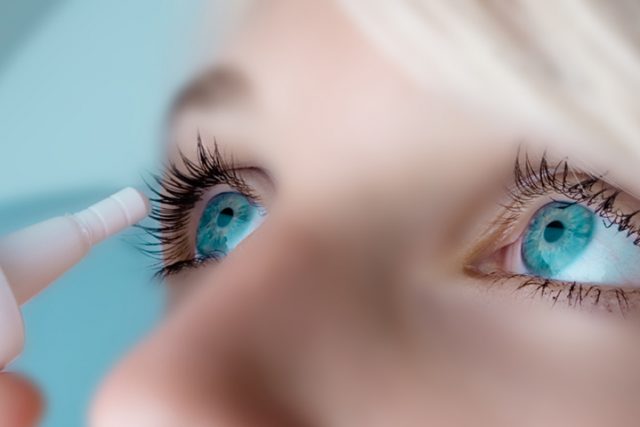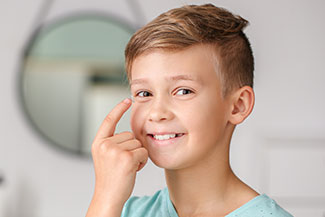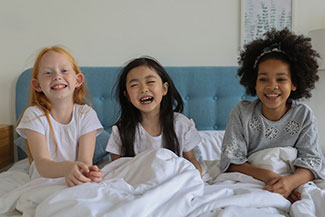Your Hartsdale and Scarsdale NY Myopia Management Specialist
Our Myopia Management Doctor & Orthokeratologist, Dr Arlene Schwartz OD
Dr. Arlene Schwartz uses state-of-the-art equipment to develop a personalized treatment plan for your child. The non-invasive treatments at Hartsdale Family Eyecare include custom-made Ortho-K contact lenses (molds), specially designed soft multifocal contact lenses, and/or atropine eye drops. At your initial consultation, Dr. Schwartz will determine the treatment that will work best for your child. A customized myopia management program is designed to monitor your child’s myopia so it remains stable and your child’s treatment will be updated as needed to maximize success.
How you can help slow myopia progression
- Increase outdoor activities. At least 60-80 minutes outdoors is recommended.
- Monitor & reduce the time of near vision tasks.
- Practice the 20-20-20 rule— every 20 minutes, look 20 feet away, for 20 seconds.
- Develop proper computer ergonomics & lighting for your child’s work area.
- We put together a fantastic e-learning guide here for you to learn more.
- Increase illumination & natural light.
- Reduce clutter in the room.
- Schedule regular eye exams for your child (and you!) with Dr. Schwartz.
If you are concerned about myopia progression, we have a number of in-office treatments that are highly effective in managing myopia & ensuring your child’s vision stays healthy & clear for the future.
What is Myopia?
Myopia or as it is commonly known, shortsighted/nearsighted is a condition that causes objects at a distance to be blurry. It usually develops and continues to worsen during school years.
Myopia increases as the size of the eye or axial length increases.
As myopia increases, so does the risk of developing many eye diseases and complications such as retinal detachment and glaucoma.
Not only is myopia the leading vision impairment in children, but myopia has been reaching epidemic proportions worldwide.
Myopia may also be a sign of binocular vision dysfunction, a condition which requires treatment.
What is Myopia Management?

Myopia Management is recommended for any child with myopia to slow down myopic progression. Treatments like Atropine Eye Drops, Ortho-k, and Soft Daily Multifocal Contact Lenses are most effective in young children, when myopia is expected to progress faster, but they can also be effective in slowing the progression of myopia in older children and young adults. Treatment may also be useful in children or young adults who do not yet have high myopia but meet 1-2 of the following criteria:
- Both parents are myopic
- The kids spend limited time outdoors
- They engage in excessive near work
When the eyes are forced to constantly perform close visual tasks like reading, playing on a smartphone or handheld video game, and even homework can prevent the eye muscles from relaxing.
Furthermore, a child with myopia will have changes occurring in their vision that may not be detected until the next eye exam, leaving them struggling in school during that time.
Signs and symptoms of myopia
Signs of myopia start in early childhood, when the eyes start to grow rapidly in size and continue to do so throughout their teenage years. Common ways to recognize a child who is nearsighted include:
- Blurry distance vision
- Squinting when reading
- Sitting too close to the TV or computer screen
- Avoidance of using their distance vision (ie outdoor activities)
Why Childhood Myopia is Dangerous
Myopia progresses rapidly during childhood. As the level of myopia increases, so does the risk of sight-threatening retinal damage, such as glaucoma, cataract, retinal detachment, and myopic macular degeneration (maculopathy). Early treatment through myopia management can slow down or even stop the progression.
Higher Risks With High Myopia
Glaucoma. Research shows that people with moderate or high myopia have a 50% higher risk of developing glaucoma. Although glaucoma is second to cataracts as the leading cause of vision loss in the United States and Canada, glaucoma is far more problematic since the vision loss is irreversible.
Cataract. The rate of cataract surgery in people with high myopia is 17% higher than in patients with moderate myopia.
Retinal Detachment. People with high myopia run a five to six times higher risk of retinal detachment than people with low myopia.
Myopic Macular Degeneration. When myopia is extremely high, it can cause the retina to stretch, leading tears to form in the macula and bleeding to occur in the areas beneath the retina. Studies show that there is a very high risk for myopic macular degeneration with high myopia, which can result in irreversible vision loss and even blindness.
Our Treatments
Atropine Eye Drops
 One of the methods of reducing the progression of myopia is the use of eye drops. Atropine drops are the same drops used by optometrists or ophthalmologists to dilate your eyes.
One of the methods of reducing the progression of myopia is the use of eye drops. Atropine drops are the same drops used by optometrists or ophthalmologists to dilate your eyes.
Myopia management through ultra low doses of atropine has been shown to reduce myopia progression with fewer side effects like light sensitivity. Plus, they have a lower risk of rebound prescription change compared to a higher percentage of atropine.
Atropine is great for younger children and can be used in conjunction with orthokeratology or multifocal contact lenses when necessary.
Overnight Orthokeratology or Ortho-K Lenses
 One of the most effective methods of reducing the progression of Myopia in children is through Orthokeratology. Ortho K contacts are special contact lenses that are designed specifically for your child's eyes, and are worn only at night time. Besides for the major benefit of reducing myopia progression, Ortho K contacts keep your children contact lens and glasses free during the day.
One of the most effective methods of reducing the progression of Myopia in children is through Orthokeratology. Ortho K contacts are special contact lenses that are designed specifically for your child's eyes, and are worn only at night time. Besides for the major benefit of reducing myopia progression, Ortho K contacts keep your children contact lens and glasses free during the day.
Although contact lenses for myopia management have the benefit of increasing self esteem, Ortho-K has the greatest impact in building confidence, improving peripheral vision, and reducing the chances of sports-related injuries.
Daytime Soft Contact Lenses
 Soft daily multifocal contact lenses are the newest trend in controlling the progression of myopia in children. New products specifically created for myopic children and teens are being released by some of the larger contact lens manufacturers.
Soft daily multifocal contact lenses are the newest trend in controlling the progression of myopia in children. New products specifically created for myopic children and teens are being released by some of the larger contact lens manufacturers.
With both past and ongoing research showing the effectiveness of myopia management, parents are being encouraged to allow their children to wear contact lenses. Children as young as 8 years old found contact lenses to be easy to use and overwhelmingly preferred contacts over glasses.
I’ve always had a great experience with Hartsdale Family Eyecare. Dr. Schwartz really cares about slowing down my myopia and she is up-to-date on the latest research relating to myopia. In the past few years, my prescription has stayed relatively the same due to Dr. Schwartz’s use of multifocal contact lenses.
Why Choose Hartsdale Family Eyecare?
Dr. Arlene Schwartz specializes in myopia management methods to help each of her younger patients manage their myopia or nearsightedness to retain a healthy level of vision. Myopia is an underestimated disease that is estimated to affect nearly half the population in 20 years!
Due to spending excessive amounts of time indoors and overusing our near vision, children become nearsighted earlier and earlier, resulting in high myopia in later years. High myopia, even just -4, greatly increases the risk of eye diseases like macular degeneration or glaucoma. Myopia management utilizes scientifically backed techniques to ensure a child’s vision stays at a normal level for a healthier future.



